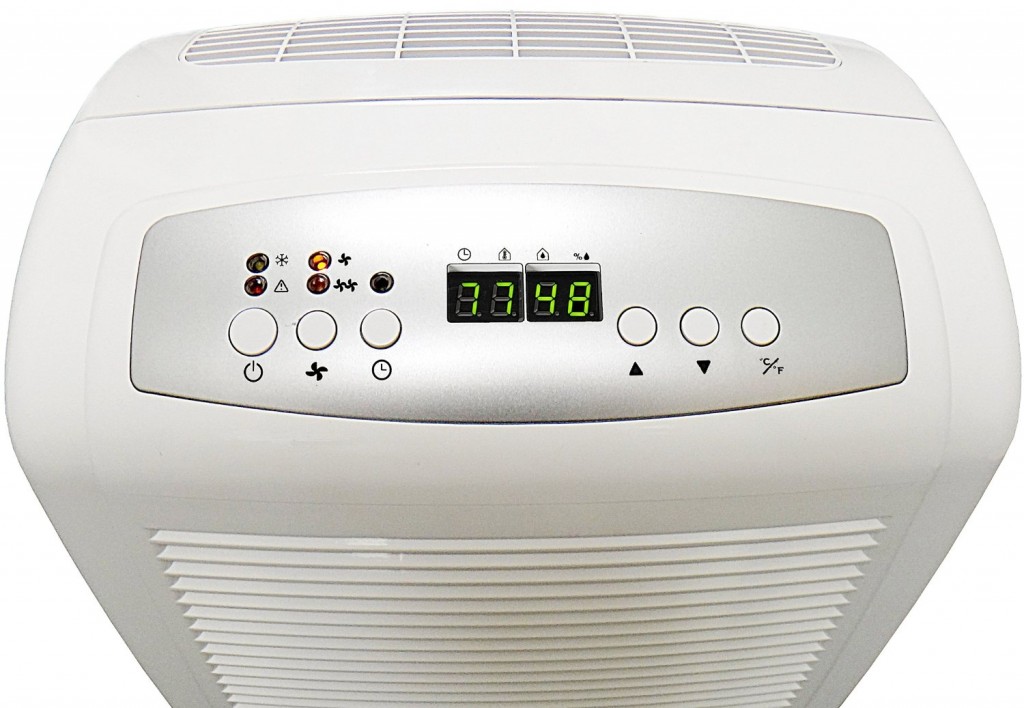What It’s For
One of the key things that makes mold infestations likely is excess humidity in your home. Your skin is actually a pretty good barometer. If the air in your home feels damp to you, you’ve definitely got a sufficient level of moisture in your house to facilitate mold growth. That’s where a home dehumidifier comes in. These units extract the excess water from the air in your home, collecting it in a fill bucket.
Every dehumidifier we’ve ever come across has a fill sensor that will automatically shut the unit off when the bucket is at capacity, in order to prevent overspill. If we ever happened across a unit that didn’t include this most basic of features, we absolutely would not recommend it. That’s just part of the minimum necessary standard for devices of this type.

One thing that Whynter does better than anybody else in the dehumidifier business is that their products are engineered for cold weather use. They perform equally well in hot, humid climates, but if you can get a machine that will work in any climate, without costing you extra, why wouldn’t you? That makes the Whynter hard to beat in our book. If you had to pay a hefty premium for the cold weather engineering, then we’d consider it a niche product and rate it accordingly, but in this case, you’ll find the company’s product line competitively priced with units that can’t function in all the places the Whynter can.
Pros
There’s so much to like about this unit that it’s hard to know where to begin. First, it’s capacity. At an impressive 70 pints per day, it’ll take care of most homes up to around 1200 square feet or so, all by itself. If you don’t live in an especially humid area, it would probably comfortably handle a 1500 square foot home, but a lot of that is dependent on what the average level of humidity in your part of the country actually is. In the humid deep south, this unit would probably be good for no more than 1000 square feet, which is still impressive, but at that point, you might need to acquire a second one to cover the whole house.
Then there’s the digital humidistat. Set the level of humidity you’re shooting for, and the machine does the rest. Where mold is concerned, anything below 50% is good, and anything above it puts you at risk.
The biggest pro though, at least in our book is the presence of the condensate pump. There are three ways to get the water out of the collection bucket, once the machine extracts it from the air. You can manually empty the bucket when it gets full. You can set up a drain hose and let gravity send it down some or other drain in your house, or you can set up the drain hose, turn on the built-in pump, and simply pump the water where you want it.
Obviously, the condensate pump option is the most convenient of the three, but not all units of this size class have them. The Whynter is one of the few that does boast an on-board condensate pump, making it all the more attractive. Other than periodically checking the integrity of the hose itself, this makes the unit pretty much set and forget.
Cons
As we mentioned above, while 70 pints per day is fairly impressive, and certainly sufficient for many people, if you live in an especially humid part of the country, it’s going or if you have a larger home, by itself, this unit is going to struggle to keep pace. That’s about its only weak spot, however, and at its price point, it’s easy enough to pick up a second one if that proves to be an issue.
Summary
Whynter is one of the best companies operating in the home dehumidifier market. Their products are excellent, as is their service and support, and this unit has all the features you could ask for. An outstanding value for the money. We give it 4.5 stars out of five, taking off a half point because for some people, living in especially humid environments, this unit, flying solo, isn’t quite enough to get the job done in all cases.
Leave a Reply